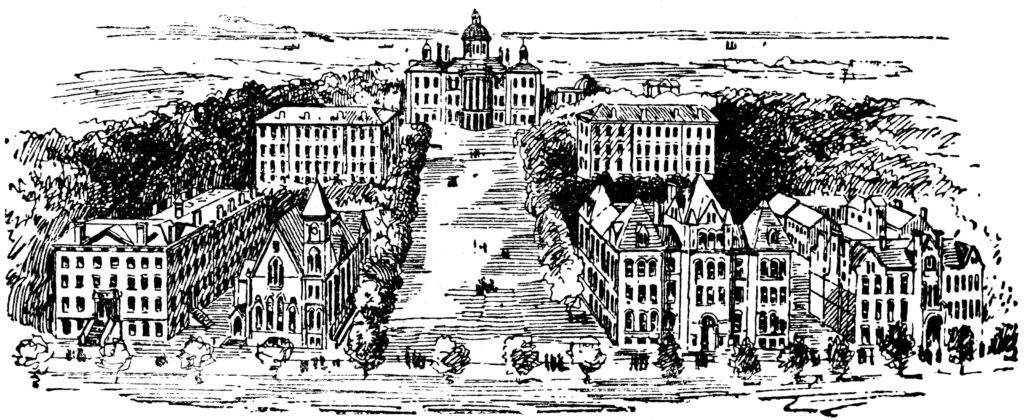
“Flow of history: The university to the rescue” is the sixth article in a series outlining the history of wastewater treatment in Madison from the mid-1800s through 1914. Earlier articles are available in the History section of our blog, beginning the series with Flow of history: Early concerns prompted community action.
By Paul Nehm
Aware of the failure of the International Process plant, in the spring of 1900 staff at the University of Wisconsin proposed to offer complimentary support.
J.B. Johnson, the dean of the College of Engineering, proposed that F.E. Turneaure, professor of sanitary engineering, be made the city engineer. Dean Johnson, who was also a professor of sanitary engineering, stated that if this proposal was accepted, he would also make available to the city the services of any other qualified faculty member to resolve the wastewater situation. The offer of free services from the University was quickly accepted by the council.
Shortly after Professor Turneaure became city engineer, he and Dean Johnson proposed a biological treatment system that used a septic tank. At the time, this type of treatment plant had supposedly only been tried at 20 places in the world.
The plant was built next to the existing treatment plant on the east side of the Yahara River and began operation in July 1901. With clear effluent flowing from the plant, it was considered a success. The effluent flowed through an 18-inch cast iron pipe to the Yahara River, one block north of East Washington Avenue.
Unfortunately, as predicted by some of the proponents of a land disposal system, the nutrient-rich effluent caused significant weed growth in the Yahara River downstream of the outfall. The weeds were initially cut by hand, but in 1905 a barge-mounted, gasoline-powered mechanical weed cutter was built to cut the weeds. It was felt that this may have been the first mechanical aquatic weed cutter ever built.
All the wastewater flowed to the plant by gravity where it entered a 20-foot deep well and was pumped to two tanks. Each tank was 30 feet wide by 120 feet long with depths varying from six to three feet. The tanks were covered with a tar and gravel roof. Water entered the tanks through eight openings and exited the tanks over a weir.
When the plant was placed into operation, the flow rate to the plant was about 600,000 gallons per day. With a detention time of more than half a day, some biological activity was also occurring in the material that settled in the tanks. Solids were pumped out of the tank at “long intervals” and floating material was skimmed from the surface.
Water leaving the settling tanks flowed to a one-acre filter bed which was divided into seven sections. Each section was fed in succession for about 30 minutes. The filter had two levels, with each level containing about two feet of screened cinders on wooden floors. The bottom of the upper bed was about a foot above the top of the lower bed. The stated purpose of the space between the beds was to provide aeration. Water was distributed over the bed by a series of three-inch diameter perforated pipes spaced two feet apart, resulting in an effluent that was described as “very clear and inoffensive.”
The construction cost of this treatment plant was $17,000. Around 1903, the cost of operating the plant was $3,500 to $4,000 per year. Comparatively, the annual operating cost for the International Process plant was about $6,000.
The treatment plant had been designed for a flow rate of 1.5 MGD. Unfortunately, by 1907 the plant had reached its design loading. By the time it was removed from service in 1914, it was treating 3.3 MGD. Although it was clear that the plant was overloaded, the city did not purchase land for another plant (the Burke Plant) until 1911. From the time the plant reached its design loading until it was replaced in 1914, partially treated effluent continued to flow into Lake Monona via the Yahara River.
Much of the information for the article series was found in “Madison – A History of the Formative Years” by David V. Mollenhoff and in articles written by early leaders from Madison’s public works sector. The article was originally published in the Spring 2021 edition of the District’s newsletter, The Clarifier.






